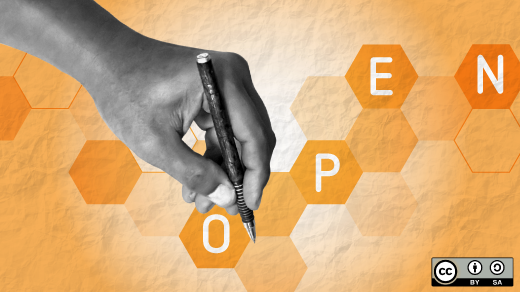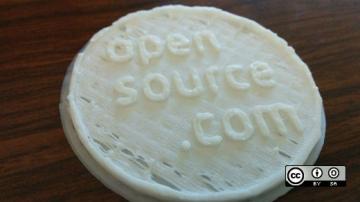Well, I suppose after all this talk of how to find your story and then write your story, I should make a post about how to do just that. I've broken it down into three sections: how to find your story, how to write your story, and how to share it and get it published.
During the All Things Open virtual event this year, I was invited to share my tips, and now you can watch that. It's about 20 minutes with some questions and commentary at the end.
You may have a clear reason why you want to write, or you may need some prodding. My belief is that we all have something valuable to share. Really. And the reasons are made clear in the survey answers in this document. One reason that resonates with many in the tech world is "because my manager wants me to," which could lead to a promotion or increased thought leadership in your field. Another great one for those working on an open source project is, "it is an act of giving back to the community... with the simultaneous goal of getting your name out in the community and building connections for other career opportunities."
How to find your story
Do your homework, but this time hopefully it's a bit more fun and a bit less time-consuming. By all means, take the afternoon or the week to complete this worksheet, but if you have an hour during work, this can fit into your busy schedule. Although I'm happy to take a look and help guide you once you get started, no one is grading your responses. They're yours, and their only goal is to get you closer to that elusive article. Whether it's your first, or your 100th, we all have reasons why it can be difficult to write.
The worksheet asks a variety of questions in a "choose your own adventure" type way. You can answer all of the questions, or skip to the parts that interest you most. It starts with asking:
- What do you do at your job?
- What are you passionate about?
- What communities are you or do you want to be a part of?
After you complete the worksheet to your liking, take a break. A few minutes, a few hours or days, and go back to it. What jumps off the page and still rings true? Perhaps it's now plainly obvious what your article should be about. If you still need a way to prioritize your choices, label each one with one of these time-based categories:
- Easy to write (you know this topic backward and forwards)
- Quick to write (explaining is fast and a short read)
- Hard to write (you may need to think through the process and list out many details)
- Time-consuming to write (this may take some additional research in addition to being highly detailed)
How to write an article
First, sit down and make yourself write an outline. I know, I know... boring! But this can save you a lot of time. Once you've landed on an outline that works for you and your topic, once you sit down and start writing, there's a better chance you'll get into the flow, following your outline, and knock it out in less time than you imagined. And in an amount of time that feels good to you and gives you a good feeling about writing, especially again and again.
Then, share it with a friend or an editor. Friends can be a quick and easy outlet, especially if they are of the writer sort. And, I encourage you to send it to an editor if you have a particular publication in mind for where you'd like to try to get it published. While you wait, buff up on your writing by taking a look at a solid style guide.
Once you get to a place where you feel ready to get writing, review the format of an article and identify who your audience is. The format of an introduction that describes what the article is about and what the reader will learn, the body of the article focused on walking the reader logically through the steps or phases with straightforward headers, and a conclusion that gives final thoughts and a summary.
I like to write using a shareable document for easy collaboration and editing with others and editors.
How to get your article published
First, decide whether you want to self-publish, on your own blog or a place like Medium, or if you want to get your article published on a publication like Opensource.com or Linux Today.
If you're reaching out to a publication, try to find information about how they would like you to submit your article. Some have webforms, some want you to simply send them an email. Some, like us, have both. Let them know who you are, what you wrote about, and perhaps why you wrote about it.
For example: My name is Jen Wike Huger. I'm a community manager and editor for Opensource.com, so my expertise is writing and working with authors. My article is about how to find your story, writing, and getting published.
Wrapping up
The slide deck, worksheet, survey answers, and style guides for writing are on GitHub.
The slides are from the All Things Open presentation. The worksheet is to help you decide what to write about, to find your story. The survey answers will inspire you and answer the question: Why should I write about what I know anyway? And the style guides will help you before and during the actual writing process, covering grammar, formatting, and more.
There are a ton more details baked into every part of this, so if you have specific questions, I welcome them in the comments, via email, or on Twitter.







Comments are closed.